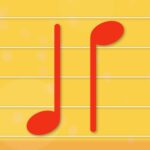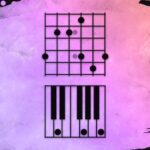Build Your Skills
Learn music theory Train your ears Track your tempoRead Now
Get the Newsletter
Categories
- | BeatMirror (10)
- | HearEQ (11)
- | Waay (22)
- | WaayFinder (1)
- Audio (16)
- For musicians (34)
- Guitar (2)
- Music theory (15)
- News (42)
- Startup stories (2)
- Tutorial (4)
Keep in Touch
About Ten Kettles
We love music, we love learning, and we love building brand new things. We are Ten Kettles.
Read more >-
March 9, 2021
Transcription and the Tab
When I was young and learning to play guitar, I generally used tabs. I loved how they spelled out precisely what notes to play and the rhythm to do so. All it took from me was a metronome, a decent practice plan, and I was set.
But something never felt quite right. Sure, tabs worked well enough, but whenever I heard anecdotes about my favourite musicians picking stuff up by ear, I would feel a twinge. “Ugh, I wish I spent more time doing that.”
Figuring out music by ear—essentially learning to transcribe (though you may not always write it down)—is an incredibly valuable skill to develop. It helps you recognize intervals, chord types, and rhythms, but it also helps you learn musical feel.
Notes aren’t music
Written music is just a model for what’s actually being played in a song. Even if all the notes and rhythms were transcribed accurately, it’s still just an approximation. Maybe the guitar solo is pushing the tempo a little on purpose. Or maybe it’s sitting behind the beat. The singer or instrument’s tone, the precise dynamics, and so on. None of this is perfectly captured—or sometimes captured at all—in written music.
“All models are wrong (but some are useful)” –George Box
We practice learning music by ear to develop a feel for these things. Music is more than the notes being played. Diving into the tracks we’re learning, ear-first, is the way to get the full musical picture. If you love learning from sheet music or tabs, keep at it—this doesn’t need to be all-or-nothing—but try adding in some transcription practice. See how it helps you play. And how it helps you really listen.
Learn to transcribe
How do you learn to transcribe? Aim for “little wins” to start. Success is motivating, so start easy: pick a melody you know really well and work it out on your instrument. Say, the “Happy Birthday” song. Write the notes on a post-it note (A A B A D C♯…) and stick it up in your practice area. Then hum another melody—just make something up—and then figure that one out too.
Aim for at least a few little transcriptions like this a week, and see those post-its build up on your wall. Don’t let it become a chore, but hit it regularly enough to experience progress. After a while, change gears: try figuring out a chord progression instead, or an interesting rhythm.
Don’t have an instrument handy to help transcribe? You can always use our free web-app Noteboard to get your notes, or check out WaayFinder‘s newest update with a redesigned keyboard perfect for transcription.



Comments